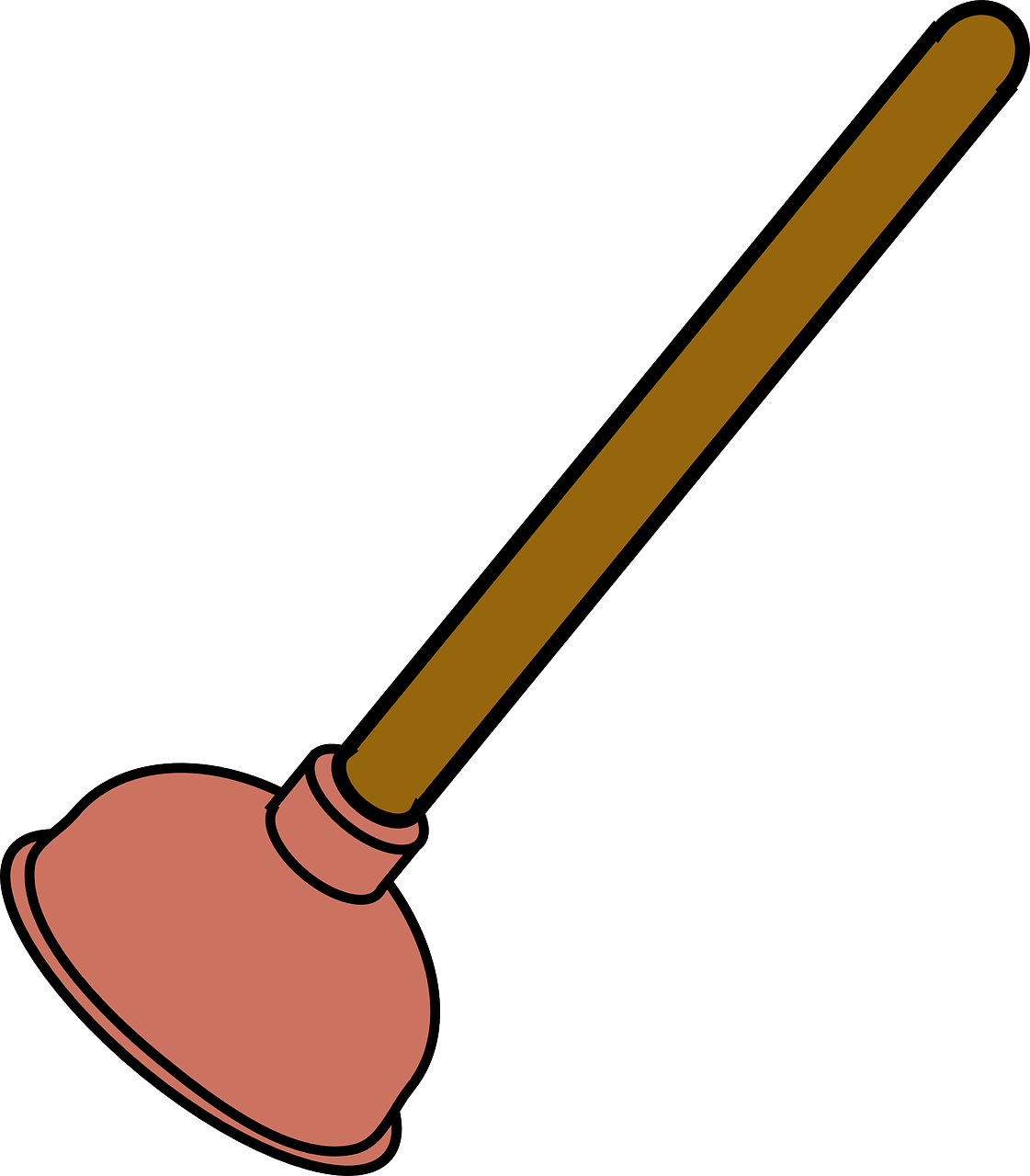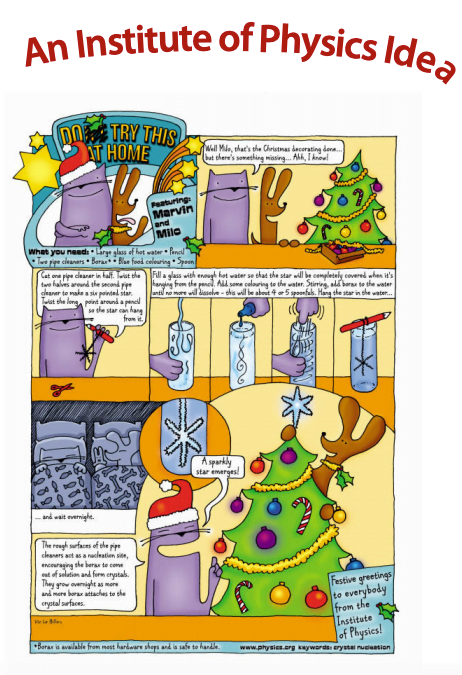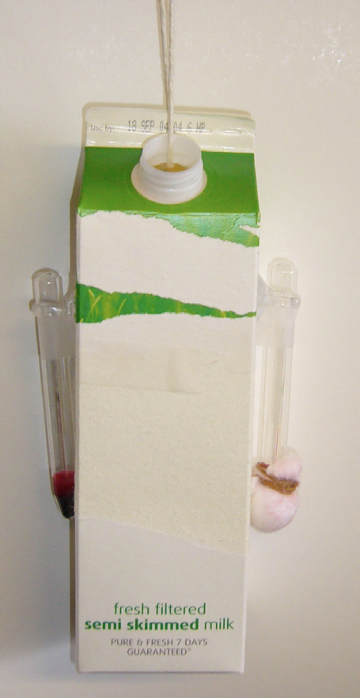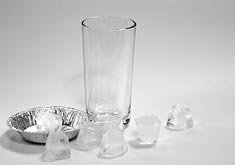Make your own Galileo Thermometer

This is a very tricky experiment to get right.
Equipment
- A small fish tank or similar clear sided container
- 8 small baby food jars or similarly watertight, lidded containers
- Sand
- Water
- Vaseline or silicone sealant
- Digital Scales and a measuring cylinder
Method
1. Clean the jars and work out what their volume is – the easiest way to do this is to see how much volume they displace when you put them in a water-filled measuring cylinder. Mark the bottles with temperatures from 5-30°C in 2.5°C intervals.
2. Add some sand to each bottle so that you end up with the densities on the next page, remembering that density = mass/ volume. This is the tricky part! If you want to span a wider temperature range, look up a density chart for water on the
web.
3. Seal the jars with a thin layer of petroleum jelly or sealant and screw them tight shut, then put them in the fish tank full of water. Add ice and/ or hot water to the tank to change the temperature, and watch the bottles sink/ rise!
Alternatively, you can add a different mass of sand to each jar and then, using an alcohol in glass thermometer, determine what the water temperature is when they rise.
Temperature Table
| Temperature (oC) | Density of bottle g/cm3 |
| 5 | 0.99997 |
| 7.5 | 0.99988 |
| 10 | 0.99970 |
| 12.5 | 0.99944 |
| 15 | 0.99910 |
| 17.5 | 0.99869 |
| 20 | 0.99820 |
| 22.5 | 0.99766 |
| 25 | 0.99704 |
| 27.5 | 0.99637 |
| 30 | 0.99565 |
How does it work?
Liquids such as water often expand much more than solids such as glass or metal when they are heated.
Objects float in water if the weight of water they displace is more than their own weight; if the weight of water displaced is less than the object’s weight, it will sink. The weight of an object does not change with temperature. The density (weight per unit volume) of a liquid changes with temperature because although the total weight is constant, the total volume changes.




